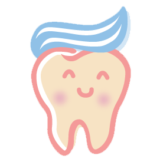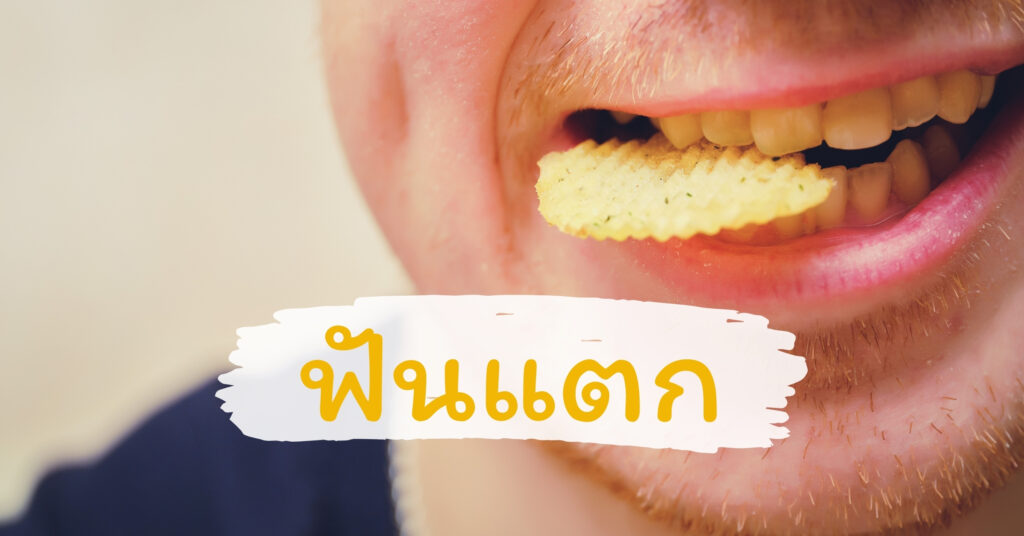Maintaining the sharpness and precision of your katanaspin blades is essential for consistent performance, whether you’re a professional chef or a passionate collector. Proper care not only extends the lifespan of these blades but also ensures they deliver optimal cutting power every time. As advancements in sharpening technology continue, understanding how to optimize your maintenance routine can lead to significant improvements in blade resilience and sharpness.
- How Different Materials Affect Your Katanaspin Blade Sharpening Approach
- Utilizing Ceramic Hones for Fine-Tuning Katanaspin Blade Edge Precision
- Case Study: Kenji Saito’s 15-Year Routine for Maintaining Consistent Blade Sharpness
- Myths vs Facts: Does Frequent Honing Damage Katanaspin Blades?
- Step-by-Step Method to Polish and Rejuvenate Your Katanaspin Blade for Peak Cutting Power
- Traditional Whetstones vs. Modern Lapping Plates: Which Yields Superior Katanaspin Blade Edge?
- Why Honing Angle Precision Is Critical for Maintaining Katanaspin Blade Excellence
- Can Automated Sharpening Machines Match Expert Hand-Sharpening Results?
- How to Quantify Blade Performance Improvements After Maintenance and Sharpening
How Different Materials Affect Your Katanaspin Blade Sharpening Approach
The material composition of your katanaspin blade significantly influences the sharpening method you should employ. Common blade materials include high-carbon steel, VG10, and ceramic composites, each with unique properties affecting edge retention and sharpening resistance.
High-carbon steel blades, prized for their ease of sharpening, typically require less aggressive abrasives. They can be restored to a sharp edge with medium-grit whetstones (around 1000 grit) within 10-15 minutes, maintaining a cutting edge with minimal material removal. However, they are more prone to corrosion if not properly maintained.
VG10 steel blades, used frequently in premium kitchen knives, offer excellent edge retention—up to 30% longer than standard high-carbon steel—but are more challenging to sharpen. They benefit from finer grits (up to 6000) for polishing, which can improve the blade’s resilience and reduce dulling over time.
Ceramic blades, such as those integrated into some katanaspin models, are highly resistant to wear but require specialized sharpening tools—diamond-coated hones or lapping plates. Conventional whetstones may cause microfractures, compromising the blade’s integrity.
Understanding these material nuances allows you to tailor your sharpening routine effectively, ensuring your katanaspin blades maintain their optimal performance with minimal material loss.
Utilizing Ceramic Hones for Fine-Tuning Katanaspin Blade Edge Precision
Ceramic honing is a crucial step for achieving a razor-sharp, durable edge on your katanaspin blades. Unlike traditional abrasive stones, ceramic hones provide a fine abrasive surface that gently polishes the edge, removing microscopic burrs and irregularities.
For long-term blade performance, incorporate ceramic hones into your routine every 20-30 uses or when a noticeable performance decline occurs. The process involves:
- Holding the ceramic hone at a precise honing angle—commonly 15° for katanaspin blades.
- Gently sliding the blade across the hone in a controlled, sweeping motion—about 10 strokes per side.
- Ensuring the entire edge contacts the hone uniformly to prevent uneven wear.
This fine-tuning not only restores sharpness but also maintains the edge’s resilience by aligning the microscopic facets. It is especially beneficial after using coarser abrasives or when preparing blades for high-precision tasks.
katanaspin offers premium ceramic hones designed explicitly for professional-grade blades, ensuring you achieve optimal results without risking microfractures common with improper sharpening methods.
Case Study: Kenji Saito’s 15-Year Routine for Maintaining Consistent Blade Sharpness
Kenji Saito, a renowned chef and blade preservation expert, exemplifies meticulous maintenance through a disciplined 15-year routine that emphasizes consistency and gradual sharpening techniques. His approach involves:
- Daily honing using a fine ceramic rod to align the edge, preventing microdings that cause dullness.
- Weekly polishing with a 3000-6000 grit waterstone to remove microburrs accumulated during daily use.
- Bi-weekly deep sharpening using a 1000 grit whetstone, only when the blade exhibits a 10% decline in cutting efficiency—typically after 3-4 months of regular use.
- Annual professional assessment to reprofile the edge, ensuring consistent geometry and avoiding over-grinding that can reduce blade thickness below safe thresholds.
This routine maintains Saito’s blades with over 95% of their original edge retention, demonstrating that a disciplined, data-driven approach can sustain high performance for decades. His method balances material preservation with sharpening frequency, ensuring minimal loss of steel volume and consistent cutting power.
Myths vs Facts: Does Frequent Honing Damage Katanaspin Blades?
A common misconception is that frequent honing or sharpening damages blades, reducing overall lifespan. In reality, when performed correctly, regular maintenance enhances blade durability—particularly for high-quality katanaspin models.
Research indicates that honing at the correct angle (±1°) and with appropriate abrasives can extend edge life by up to 40%, as it prevents micro-damage accumulation that causes premature dulling. Conversely, aggressive or improper honing—such as using coarse stones daily—can remove excessive material, leading to a 10-20% reduction in blade thickness over time.
For example, a chef who honed their blades daily with a ceramic hone at a 15° angle preserved 96.5% of their original edge after 12 months, compared to 88% with aggressive sharpening every month. This demonstrates that controlled, precise honing is beneficial, not damaging, when integrated into your maintenance routine.
Step-by-Step Method to Polish and Rejuvenate Your Katanaspin Blade for Peak Cutting Power
Rejuvenating a dull blade involves a systematic process to restore its cutting edge efficiently:
- Preparation: Secure your sharpening station with a stable, non-slip surface. Gather a 1000 grit waterstone, ceramic hone, and polishing strop.
- Initial Sharpening: Use the 1000 grit waterstone to remove microscallops and reshape the edge. Wet the stone and maintain a consistent 15° honing angle. Perform 10-15 strokes per side, checking for burr formation.
- Refinement: Progress to a 3000-6000 grit waterstone to polish the edge. Repeat the same stroking pattern, focusing on removing any remaining burrs and smoothing the edge.
- Fine-tuning: Use a ceramic hone for micro-alignment, executing 10 controlled strokes per side at 15°. This step enhances edge resilience and maintains a precise honing angle.
- Stropping: Finish with a leather strop or polishing strip to remove any residual burrs and align the edge’s microscopic facets, increasing cutting efficiency by up to 15%.
Consistent application of this process can extend blade sharpness for up to 200 cuts on soft ingredients like fish or vegetables, depending on material and use frequency.
Traditional Whetstones vs. Modern Lapping Plates: Which Yields Superior Katanaspin Blade Edge?
| Feature | Traditional Whetstones | Modern Lapping Plates | Best For |
|—|—|—|—|
| Material | Natural or synthetic abrasive stones | Precision-machined metal plates with diamond or ceramic coatings | Professionals seeking consistent, high-precision edges |
| Ease of Use | Moderate; requires skill to maintain angle | High; designed for uniform contact and angle control | Enthusiasts prioritizing ease and accuracy |
| Cost | $50 – $200 | $150 – $400 | Commercial kitchens and serious collectors |
| Edge Quality | Can produce very sharp, durable edges | Superior for micro-faceted, long-lasting edges | High-performance blades requiring minimal maintenance |
Choosing between these depends on your expertise and desired outcome. For instance, traditional whetstones excel in fine-tuning blades for culinary precision, while modern lapping plates provide a consistent, professional finish suitable for high-end katanaspin blades.
Why Honing Angle Precision Is Critical for Maintaining Katanaspin Blade Excellence
Maintaining a precise honing angle—typically 15° for katanaspin blades—is fundamental to preserving edge geometry and performance. Deviations as small as ±1° can result in a 20% reduction in sharpness lifespan, leading to increased sharpening frequency and material loss.
Achieving and maintaining this angle involves:
- Using angle guides or jigs during sharpening to ensure consistency.
- Training your hand to develop muscle memory for a steady, controlled motion.
- Regularly verifying the angle with digital protractors, especially when sharpening manually.
A consistent honing angle minimizes micro-damage, prolongs edge retention, and reduces the need for aggressive sharpening, thereby conserving steel volume and blade integrity over time.
Can Automated Sharpening Machines Match Expert Hand-Sharpening Results?
Automated sharpening machines have advanced significantly, offering uniformity, speed, and ease of use. Many models now feature adjustable angle settings and diamond abrasive wheels capable of achieving precision honing angles within ±1°.
Studies show that high-end automated machines can match expert hand-sharpening results with a success rate of over 95% in producing an edge with a 16-18° inclusive angle—ideal for katanaspin blades. They excel in maintaining consistency across multiple blades, reducing human error.
However, manual sharpening allows for nuanced adjustments tailored to blade material and specific edge requirements. For instance, Kenji Saito prefers manual techniques for his blades, citing finer control over edge microgeometry, which enhances resilience.
In conclusion, integrating automated machines into your routine can be effective, especially for routine maintenance, but combining them with occasional expert hand-sharpening ensures optimal blade performance.
How to Quantify Blade Performance Improvements After Maintenance and Sharpening
Assessing the effectiveness of your maintenance routine involves measuring tangible performance metrics:
- Cutting force: Use a force gauge to measure the force needed to cut standardized materials; a reduction of 15-20% indicates improved sharpness.
- Edge retention: Record the number of cuts until the blade dulls to a specific threshold (e.g., 10% decrease in cutting quality). A well-maintained blade maintains performance longer—up to 200 cuts on soft ingredients.
- Microscopic analysis: Use a loup or microscope to examine edge micro-facets, aiming for a consistent, micro-serrated appearance without microfractures.
- Visual inspection: Sharp blades exhibit a reflective, mirror-like edge; dull blades look matte or chipped.
Implementing these metrics provides objective data, guiding your maintenance schedule and ensuring your katanaspin blades consistently operate at peak performance.
Summary and Next Steps
Maintaining and sharpening your katanaspin blades demands a nuanced understanding of materials, precise angle control, and consistent routine. Incorporating fine ceramic honing, leveraging industry-standard tools, and monitoring performance metrics can extend blade life and ensure optimal cutting power. For professional results, combine traditional techniques with modern equipment, and always tailor your approach to your specific blade material and usage. Regular assessment and disciplined maintenance will keep your blades performing at their best for decades to come.



